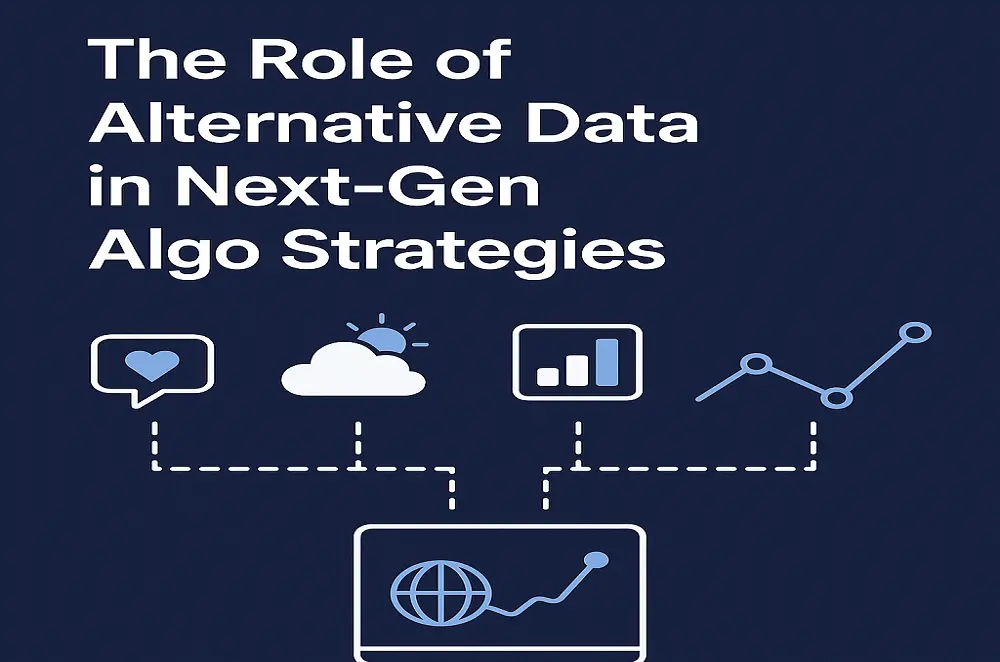Technology is changing rapidly in the world of trading, and the game of investing is no longer limited to charts and prices. Algorithmic trading is now dominated by traditional data as well as “alternative data”. This data is that which is not usually found in financial reports or stock charts – such as social media sentiment, weather patterns, mobile location data, e-commerce sales reports, and even Google search trends.
What is alternative data?
Alternative data is also called “non-traditional data”. It includes all the information that is not included in traditional financial analysis, but can affect the direction of the market.
– Some of the major alternative data sources:
– Social media (emotional trends on Twitter, Reddit, Facebook)
– Consumer behavior data (trending products on sites like Amazon/Flipkart)
– Satellite imagery (such as activity at mining sites)
– Weather data (impact on crops, energy and FMCG sectors)
– Mobile traffic/location data (crowds at malls or stores)
How is it used in algo trading?
Algorithmic trading involves automated trading decisions using computer code and data. Earlier these algos were based only on data like prices and volumes. But now with the help of AI and machine learning, algo bots are making more “human-like” decisions by analyzing alternative data.
For example –
Suppose suddenly there is a lot of positive talk about a tech company on Twitter, and people are praising its products. The algo reads this sentiment data and predicts a rise in the stock of that company and immediately places an order.
Why is its demand increasing?
- Competition in the market has increased: Now every trader wants to get information before others. Alternative data gives this ‘edge’.
- Availability of AI/ML technologies: Now machine learning algorithms can scan millions of data points in seconds and find patterns.
- Real time decision making: Traditional data comes late, while social media or traffic data is available immediately.
- Possibility of high returns: Research has found that algo bots that use alternative data correctly can perform 15–20% better.
Example: GameStop and Reddit
In 2021, GameStop’s stock in the US made a big jump due to social media, especially Reddit. At that time many hedge funds updated the algo by tracking the activities of Reddit and made profits. This is a strong example of how social sentiment data is changing the future of algo trading.
What is the situation in India?
- Many algo trading platforms in India are now using alternative data.
- Platforms like Tradetron, Algobulls, Kuants are now using data like Twitter sentiment and Google Trends.
- Brokerages like Zerodha and Upstox are now supporting such data integration through APIs.
- SEBI has also recently indicated in a report that new guidelines may be brought regarding data transparency and legitimate use of algos.
What are the challenges?
- Validity and reliability of data: Alternative data is not always correct. Rumors or false news can confuse algos.
- Risk of overfitting: Machine learning models may depend on too much data and may perform unstable.
- Privacy and ethics: It is important to take care of user privacy while using mobile or location data.
Future Direction
By 2025 and beyond, it is believed that more than 60% of algorithmic trading will be based on some form of alternative data.
Fintech companies are now building tools that can scan thousands of data sources in real-time and update algo bots.
Conclusion:
The future of algorithmic trading is incomplete without alternative data. This data not only accelerates real-time decision making but also keeps traders ahead of the competition. However, it also requires responsibility and understanding. This combination of technology points to a new revolution in the world of finance.

